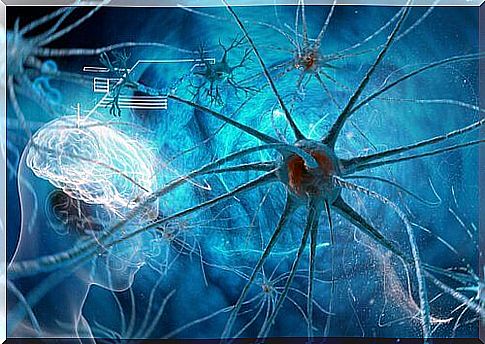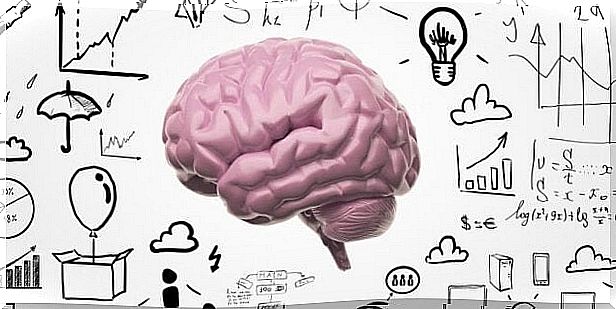Now We Know More About How We Generate New Memories

The brain is the organ responsible for two fundamental abilities: thinking and acting. Both require, for their implementation, the ability to learn (store) and remember (retrieve) the information acquired. The great advance of neurosciences in recent years has allowed us to know some of the mechanisms that work when these skills are put into operation, paying special attention to those areas that work when we generate new memories.
Science fiction on the one hand, and media pressure on the other, have made some errors, myths or inaccurate approaches about our central nervous system persist in the collective unconscious: from accepting that the brain is like a computer to thinking that it is a a plastic structure with unlimited capacities. Today, we know that this is not entirely true because we know more about how these magical little cells called neurons are generated and communicated.
Where are the memories kept?
Short-term and long-term memories are generated simultaneously and stored respectively in the hippocampus and in the prefrontal cortex. In this sense, the brain area in which short-term memories are stored has already been identified, this was not the case with the long-term memorization process. However, a study carried out by researchers at the Picower Institute for Learning and Memorization of the Massachusetts Institute of Technology in Cambridge (USA) has managed, for the first time, to describe where and how long-term memories are created .
As Mark Morrissey, co-author of the research, points out, memories are formed in parallel and then take different paths : those of the prefrontal cortex become stronger and those of the hippocampus become weaker (unless there is review).
The novelty of this study is that it has been shown that communication between the prefrontal cortex and the hippocampus is very important. If the circuit connecting these two brain regions were interrupted, the engrams of the cortex would not mature properly. Or what is the same, long-term memories will not be stored.

Memories are absolutely essential for our development and survival. Even more so in the case of those negative memories that, in the form of alarm, warn us about the risk we can run by repeating a behavior that gave us suffering in the past. So much so that, in order to keep us alive and make sense of suffering, the brain needs to store long-term memories.
Memories depend on our neurons
The results of the study by Mark Morrissey showed that memory neurons are located in three brain areas: in the hippocampus, in the prefrontal cortex and in the amygdala, the latter involved in memories associated with emotions. Ultimately, these results demolish many previous theories about the consolidation of memories. It established that short-term and long-term memories were not formed simultaneously in the hippocampus and the prefrontal cortex, but were generated in the hippocampus to later be transferred to the cerebral cortex.
Neurons in practice function on the basis of communication, since the brain uses few brain cells to remember something it has seen. This contradicts what has been thought until now: the brain uses a huge network of neurons to store memories. Research suggests that neurons act like thinking cells, capable of specializing in certain memories previously selected by the brain.

This discovery could serve to “artificially” restore memory to people who have suffered brain damage or are affected by diseases such as Alzheimer’s. At the same time, the results suggest the existence of a brain code that plays an important role in the knowledge of visual perception and in brain procedures to elaborate abstract memory.
Outside the field of neurology, this discovery will undoubtedly contribute to the development of artificial intelligence and neural networks, improving the architecture of many technological devices of daily use and that we use to store and process information.
H ipocampo, prefrontal cortex and amygdala
In the 1950s, the case of the patient Henry Molaison was studied, who suffered damage to the hippocampus after an operation to control his epileptic episodes. As a result, Molaison was unable to form new memories after the operation, but he did retain those he had before undergoing surgery, revealing the importance of the hippocampus in the formation of new long-term memories.

This case suggested that long-term episodic memories of specific events were stored somewhere outside the hippocampus, and scientists consider that location to be the prefrontal cortex, the part of the brain responsible for cognitive functions, such as the ability to plan or render. attention. This suggests that traditional theories about memory consolidation may not be accurate, although further studies are needed to determine whether memories are completely erased from hippocampal cells or failure to remember is simply a problem with recovery. .
For its part, the amygdala also plays an important role in determining with what structure we store new memories. The association of new memories with emotional states allows a greater connection and fixation of the situations to be remembered. That is, the amygdala is responsible for giving more or less imprint (salience) to a memory based on the associated emotions. It also influences when determining which details of a memory will be deeper in this footprint and which less.
The amygdala has a protective function, and explains why it is possible that some people are very afraid of dogs (emotional memory) but do not remember the situation where that fear occurred (narrative memory). This probably occurs due to the stress they suffered in a past event with these animals or that the initial event has been accompanied by many others. This type of memory, emotional memory, is what allows us to remember which clues in the environment are associated with a dangerous or beneficial event.
The activation of the amygdala in the face of stimuli that cause us fear enhances the imprint of memories, makes it deep. That is, we better remember the things that happen to us when intense emotions arise simultaneously, so the arousal or emotional activation is what makes it easier for memories to be consolidated.
Here we have seen some of the most relevant discoveries that have been made in recent years about memory and the generation of new memories. However, the answers that researchers currently defend are far from closed answers. In the same way, being recent discoveries, we have not yet taken full advantage of them to improve the lives of those people suffering from memory problems .
Bibliography
I. Massó, AG (2009). The brain as a machine for learning, remembering and forgetting. Arbor , 185 (736), 451-469.
Jung, CG, Jaffé, A., & Borrás, MR (1966). Memories, dreams, thoughts (pp. 476-477). Seix Barral.
Morgado, I. (2014). Learn, remember and forget. Brain keys to memory and education .
Pérez Rosales, V., & Rosales, VP (1972). Memories of the past (No. Sirsi) a444462).
Santamaría, R. (2016). The ability to save and remember information has its mystery: silence! memory working.
Sousa, DA (2002). How the Brain Learns . Corwin Press.
Walker, MP (2007). Sleep to remember. Our brain needs to sleep before and after learning new things, regardless of the type of memory in question. Naps can help us, while caffeine is not a good substitute. Mind and Brain , (25), 53-61.









